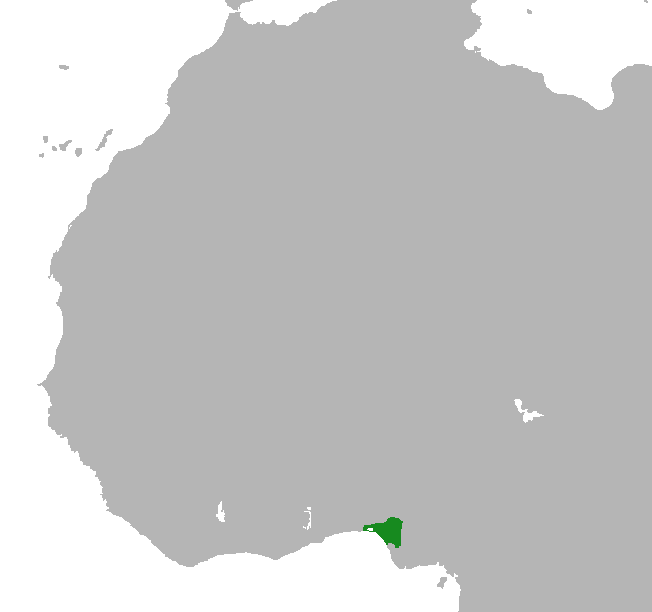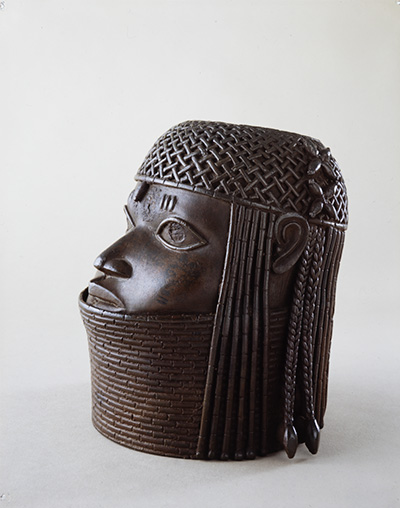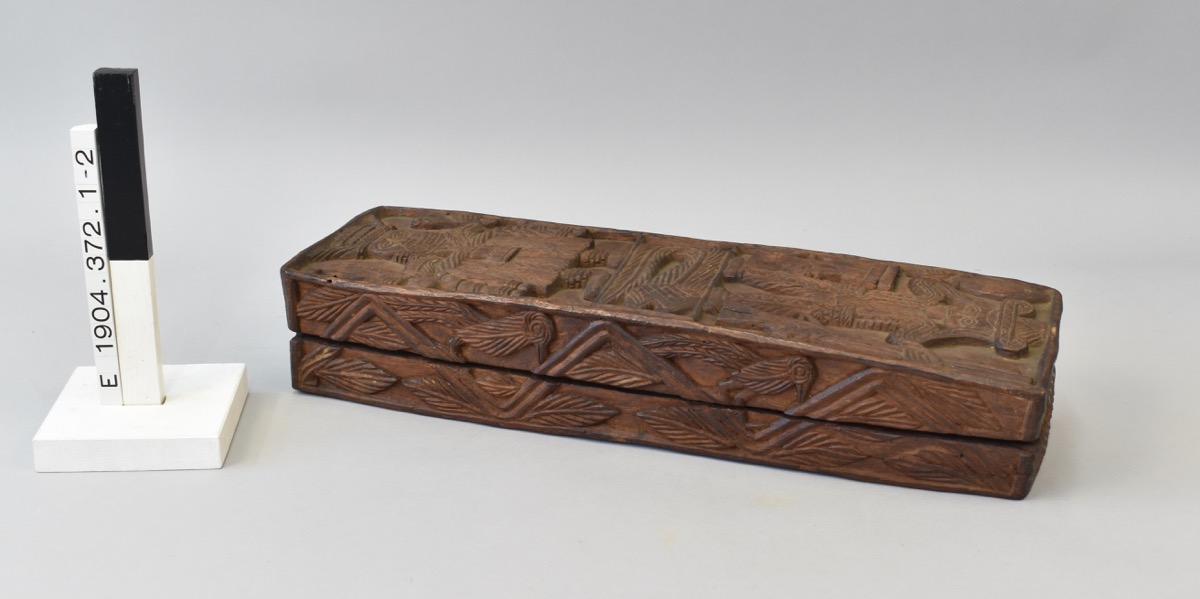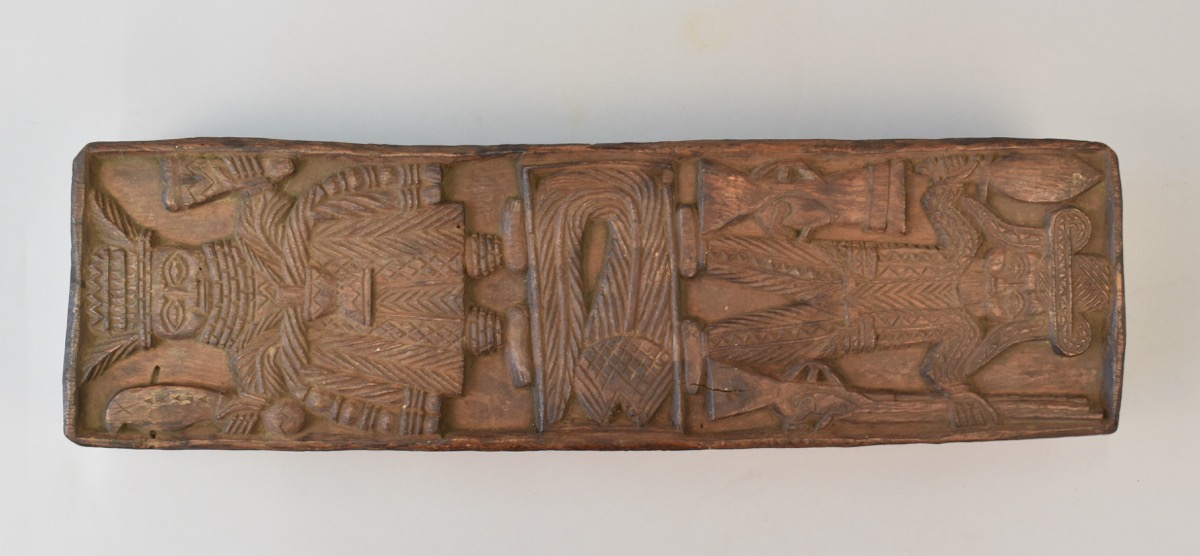KINGDOM OF BENIN (beh-neen) 900 AD - today.
Ethnicity: Bini, Yoruba, Edo
Language: Edo, Yoruba
Important locations: Modern-day Nigeria and Benin City, Yorubaland, Ughoton, Gwaton and Edo
The Kingdom of Benin is renowned for their people's amazing skills with brass, ivory and wood. The kingdom was by the side of a river (River Niger) and although it started small - little farms and villages among the trees - over hundreds of years it grew larger and larger until its as one of the richest and busiest kingdoms in Africa, with a capital city.
The craftsmanship and artistry of the heads and other works led Europeans to incorrectly believe that these objects could not have been made by Africans. This is part of the reason why people believed that Africans were not equal to Europeans.
Some key Obas and Iyoba:
Oba Ewuare – (Reign: 1440-1473) Rebuilt much of Benin and expanded the territory and kingdom structures. He also promoted arts and festivals. Was a magician and warrior. Regarding religion, Oba Ewuare brought in several new religious cults (Ake, Oza, and Okhwahe) and founded new shrines and festivals.
Oba Ozolua (Ezuola) – (Reign: c.1481 - 1504) Best known for establishing stable trade relations with the Portuguese and consolidating the works of Oba Ewuare.
Oba Esigie - (Reign: 1504-1550) Known for establishing diplomatic ties with the Portuguese, sending ambassadors abroad and establishing a school in Edo for teaching the reading and writing of Portuguese in the Kingdom of Benin.
Iyoba Idia – Best known for being the first Iyoba or Queen Mother, her son was Oba Esigie, and she played a key role in the end of one of the Kingdom’s civil wars. She used her skills as a great warrior, political intellect, medicinal knowledge and mystical powers.
Uhunmwum lao (Commemorative Head)
Uhunmwum elao or Commemorative Head – E 1902.95
The object pictured above is sometimes referred to as one of the "Benin Bronzes". In the museum it is called a 'commemorative head', and its local term is Uhunmwum elao. It depicts the head of an 'Oba' (or 'King') of the Kingdom of Benin and was made sometime between the mid-16th and early 17th centuries. We are not sure which head relates to which Oba.
Heads like these would have been in the palaces of the Oba and at shrines. They served to emphasise the authority of the ruler. The Oba held a powerful position in the society of the Kingdom of Benin. Not only was he politically powerful but he was also considered to possess divine powers. This included the ability to perform magic and even to hold sway over life and death. Part of the reason for this belief was the fact that the Oba represented a living link to a long line of sacred and powerful ancestors and deities. It was forbidden, for instance, to suggest that the Oba might need to eat, sleep or wash. The punishment for doing so was death.
A Benin box
This highly decorated wooden Ẹkpẹtin (box) was most likely made by an Omada (page servant) in the Royal Palace of Benin. Carved in shallow relief we can identify the image of an Oba and an image of a European.
What’s the significance of this decoration? The European is sharing the same space here as the Oba, the sacred leader of Benin. This points towards the growing influence of European traders, specifically the British, French, and Portuguese, within the Kingdom. For over 500 years the Kingdom traded peacefully with Europeans until the British Expedition in 1857.
Although the exact date when this object was created is not known, their style of dress suggests it was made sometime in the 17th or 18th Century. This period represented an era of decline for the Kingdom of Benin characterised by a succession crisis and the drop in value of its cloth exports. From 1730 onwards, Obas began selling war captives to European traders and the Kingdom began to depend more and more on the slave trade as a source of wealth.
Which of the following was a more important reason for territorial expansion of the Kingdom of Benin?
- Military might
- Administration
‘The relationship between Benin and Europe was the greatest cause of its undoing’. How far do you agree?
Igho
These objects are called Igho, or manillas. The examples pictured here are made of copper, are between 30-40cm long and, aside from a few grooves and punched dots, are entirely plain.
- Igho, manilla of cast brass, Democratic Republic of the Congo. 1927.33
- Igho, manilla of cast brass, Democratic Republic of the Congo. 1927.34
- King manilla, Nigeria. Z 10196
- Manilla - 'ring money', Nigeria. E 1906.275
They were originally produced in West Africa as a form of currency.
The manilla pictured (Z 10196) is an example of a ‘king’ manilla and was made in Birmingham in 1856 for trade. Manillas like these were used by the Portuguese to trade with the Kingdom of Benin in the 16th and 17th Centuries. Initially, they were exchanged for goods such as peppers, cotton cloths, leopard skins, palm oil and coral beads. They were not used generally for the purchase of slaves as the Obas of Benin had outlawed the selling of slaves in the 1530s. However, as the slave trade expanded the Portuguese began to use manillas to pay for yams, wood, and water with which they supplied their slave ships for the trans-Atlantic voyage.
Benin had a wide variety of trade resources, and this was a major contributing factor to it being one of the longest lasting kingdoms.
Which of the following was the most significant reason for the decline of the Kingdom of Benin in the 17th and 18th Centuries?
- Internal political factors
- European influence
‘The Obas of Benin successfully managed their relationship with European traders to their own advantage’. How far do you agree?







